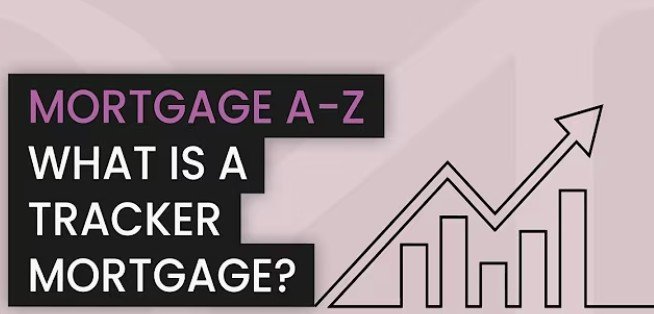Everything You Need to Know About Tracker Rate Mortgages
Table of Contents
- Introduction
- What Is a Tracker Mortgage?
- How Does a Tracker Mortgage Work?
- Tracker Mortgages vs. Fixed-Rate Mortgages
- Tracker Mortgages vs. Standard Variable Rate (SVR)
- Types of Tracker Mortgages
- Advantages of Tracker Mortgages
- Disadvantages and Risks
- Who Should Consider a Tracker Mortgage?
- How to Qualify for a Tracker Mortgage
- Tracker Mortgage and Base Rate Changes
- Long-Term vs. Short-Term Tracker Mortgages
- Fees and Charges Involved
- Early Repayment Charges (ERC)
- Tracker Mortgage and Remortgaging
- Impact of Tracker Mortgages on Monthly Payments
- Best Tracker Mortgage Lenders in 2025 (UK Focus)
- How to Switch from a Tracker to a Fixed-Rate Mortgage
- Interest Rate Forecast and Its Effect on Tracker Mortgages
- Tips to Manage a Tracker Mortgage Efficiently
- First-Time Buyers and Tracker Mortgages
- Buy-to-Let Tracker Mortgages
- Tracker Mortgages During Economic Uncertainty
- Common Myths About Tracker Mortgages
- Final Thoughts
- FAQs About Tracker Mortgages
1. Introduction
As the real estate market evolves and interest rates fluctuate, homebuyers are constantly seeking mortgage options that provide flexibility and cost-effectiveness. One such option is the tracker mortgage, a variable-rate loan tied to a financial benchmark, typically the Bank of England base rate.
In 2025, with central banks around the world closely adjusting monetary policy, tracker mortgages are gaining renewed interest. This comprehensive guide will walk you through everything you need to know about tracker rate mortgages — how they work, their pros and cons, eligibility criteria, and expert tips.
2. What Is a Tracker Mortgage?
A tracker mortgage is a type of variable-rate home loan where the interest rate “tracks” an external reference rate, most commonly the Bank of England base rate, plus a fixed percentage set by the lender.
Example:
If the base rate is 5.25% and your lender adds 1.00%, your tracker mortgage interest rate would be 6.25%.
Unlike standard variable-rate (SVR) mortgages, tracker mortgages are contractually tied to an external rate and follow its movements, both up and down.
3. How Does a Tracker Mortgage Work?
Tracker mortgages operate on a simple principle:
Interest Rate = Base Rate + Lender’s Margin
If the base rate increases, your mortgage payments go up. If the base rate falls, your payments decrease accordingly.
Key Features:
- Transparent linkage to the base rate
- Usually runs for 2, 5, or 10 years (some are lifetime deals)
- Reverts to lender’s SVR after the tracker period ends
- Some come with early repayment charges (ERC)
4. Tracker Mortgages vs. Fixed-Rate Mortgages
| Feature | Tracker Mortgage | Fixed-Rate Mortgage |
|---|---|---|
| Rate Changes | Yes, varies with base rate | No, remains constant |
| Initial Rate | Typically lower | Slightly higher |
| Flexibility | More flexible | More predictable |
| Risk | Higher | Lower |
| Suitable For | Rate drop expectations | Budget-conscious buyers |
A tracker mortgage can be more affordable if interest rates drop, while a fixed-rate mortgage offers stability, ideal for those on a tight budget.
5. Tracker Mortgages vs. Standard Variable Rate (SVR)
| Feature | Tracker Mortgage | SVR Mortgage |
|---|---|---|
| Linked To Base Rate | Yes | No |
| Predictability | Higher | Lower |
| Lender Discretion | No | Yes |
| Transparency | Clear linkage | Variable and discretionary |
Tracker mortgages are generally more transparent than SVR loans, which change at the lender’s whim.
6. Types of Tracker Mortgages
- Initial Period Tracker – Tracks the base rate for an initial 2-5 year period.
- Lifetime Tracker – Tracks the base rate for the entire loan term.
- Capped Tracker – Comes with an upper limit (cap) on how high the rate can go.
- Flexible Tracker – Allows overpayments, underpayments, or payment holidays.
- Offset Tracker – Links your savings to your mortgage to reduce interest.
7. Advantages of Tracker Mortgages
- Lower Initial Rates – Often cheaper than fixed-rate deals
- Potential for Savings – Payments drop when base rate falls
- Transparency – Direct link to the base rate ensures predictability
- Flexible Terms – Some allow overpayments and payment holidays
- Good for Short-Term Borrowers – Ideal for those who plan to remortgage soon
8. Disadvantages and Risks
- Rising Payments – If the base rate rises, so do your monthly payments
- Unpredictability – Budgeting is harder than with fixed-rate deals
- Early Repayment Charges – Many deals penalize early exits
- No Cap on Interest Rate (unless specified) – Payments can rise significantly
- Stress During Volatility – Not suitable during economic uncertainty
9. Who Should Consider a Tracker Mortgage?
Tracker mortgages are best for:
- Borrowers expecting interest rate drops
- Those with higher risk tolerance
- Short-term homeowners
- Buyers who want low upfront costs
- Individuals planning to remortgage or move in a few years
10. How to Qualify for a Tracker Mortgage
Lenders assess the same core factors:
- Credit Score – Typically 650+
- Deposit – Minimum 5%, preferably 10–25%
- Income – Must prove affordability
- Debt-to-Income Ratio (DTI) – Should be low
- Employment Status – Preferably full-time, stable job
11. Tracker Mortgage and Base Rate Changes
The Bank of England base rate is subject to change based on:
- Inflation control
- Economic stability
- Employment rates
- Global financial trends
Tracker mortgages are very sensitive to these changes. A small base rate increase (e.g., 0.25%) could add £25–£50/month to your payments.
12. Long-Term vs. Short-Term Tracker Mortgages
| Term | Best For | Risk |
|---|---|---|
| 2–5 Years | Short-term buyers | Lower |
| Lifetime | Long-term commitment | Higher |
Short-term tracker mortgages are more popular as they offer flexibility without long exposure to interest rate hikes.
13. Fees and Charges Involved
- Arrangement Fees – £500–£2,000
- Booking Fees – Often non-refundable
- Valuation Fees – Property inspection charges
- Legal Fees – Required for conveyancing
- Exit Fees – Charged at the end of the mortgage
Always request a Key Facts Illustration (KFI) from your lender.
14. Early Repayment Charges (ERC)
Most tracker mortgages include an ERC clause during the initial period.
- Typically 1%–5% of the loan amount
- Can make remortgaging costly
- Some tracker deals are ERC-free, ideal for flexible buyers
15. Tracker Mortgage and Remortgaging
Once the tracker term ends, your rate reverts to the Standard Variable Rate (SVR). You can:
- Remortgage to another tracker
- Switch to a fixed-rate
- Pay off the mortgage early
Consider remortgaging 6 months before your tracker deal ends.
16. Impact of Tracker Mortgages on Monthly Payments
Example:
- Loan: £200,000
- Base Rate: 5.25%
- Lender Margin: 1.00%
- Total Interest Rate: 6.25%
Monthly Repayment (25 years): approx. £1,320
If base rate rises to 6.00%, payment becomes: £1,400
If base rate drops to 4.50%, payment becomes: £1,200
Tracker mortgages expose you to payment fluctuation.
17. Best Tracker Mortgage Lenders in 2025 (UK Focus)
| Lender | Typical Tracker Rate | Notable Features |
|---|---|---|
| Barclays | Base + 0.89% | No ERC option available |
| HSBC | Base + 0.94% | Offset available |
| Nationwide | Base + 1.25% | 10% overpayment option |
| Santander | Base + 1.10% | Cashback on completion |
| Halifax | Base + 0.95% | First-time buyer friendly |
Rates are illustrative; always check current offers.
18. How to Switch from a Tracker to a Fixed-Rate Mortgage
Steps:
- Review your current deal’s ERC terms
- Shop for competitive fixed-rate deals
- Apply for a remortgage
- Complete legal and valuation processes
- Pay off your tracker and switch
Timing matters. Lock in a fixed deal before significant rate hikes.
19. Interest Rate Forecast and Its Effect on Tracker Mortgages
Economists predict moderate base rate fluctuations through 2025. Key factors include:
- Inflation stabilization
- Bank of England monetary policy
- Economic recovery or slowdown
Tracker borrowers must monitor macroeconomic indicators regularly.
20. Tips to Manage a Tracker Mortgage Efficiently
- Set aside a buffer fund for rate hikes
- Use overpayments to reduce principal
- Stay updated on base rate forecasts
- Consider a capped tracker if risk-averse
- Review your deal annually
21. First-Time Buyers and Tracker Mortgages
Pros:
- Lower starting rates
- Potential early savings
- Short-term flexibility
Cons:
- Payment unpredictability
- Risk of rate hikes impacting affordability
Tip: Consider tracker deals with ERC-free clauses for maximum flexibility.
22. Buy-to-Let Tracker Mortgages
Landlords often use tracker mortgages for:
- Short-term investments
- Portfolio flexibility
- Anticipated rate drops
Lenders may require:
- Higher deposits (20–25%)
- Proof of rental income
- Minimum income threshold
23. Tracker Mortgages During Economic Uncertainty
During volatile times (e.g., recessions, global events):
- Central banks may cut rates, benefitting tracker borrowers
- However, sudden rate hikes can cause repayment shocks
- Borrowers should have financial buffers and flexibility plans
24. Common Myths About Tracker Mortgages
- Myth: “Tracker means rates won’t go up.”
– False. Rates can rise with the base rate. - Myth: “They’re always cheaper than fixed deals.”
– Not always. Depends on the base rate movement. - Myth: “All tracker mortgages come with ERCs.”
– Some do not. Always read the terms.
25. Final Thoughts
A tracker mortgage can offer significant advantages, especially when interest rates are stable or falling. However, they come with inherent risk and require a proactive approach to personal finance.
Before committing, ask yourself:
- Can I afford rate increases?
- Do I plan to move or remortgage soon?
- How much risk am I comfortable with?
In 2025, with inflation and base rates in flux, tracker mortgages are best suited for flexible, financially-savvy borrowers who are willing to accept the trade-off of short-term savings against potential long-term unpredictability.
26. FAQs About Tracker Mortgages
Q: Can my lender change the rate without base rate movement?
A: No. In a true tracker, the rate only changes when the reference base rate changes.
Q: What happens when the tracker period ends?
A: The loan usually reverts to the lender’s SVR, which can be higher and less predictable.
Q: Is a tracker mortgage better than fixed in 2025?
A: It depends on your risk appetite and interest rate forecasts. If rates fall or remain stable, trackers can save money.
Q: Are there no-fee tracker mortgages?
A: Yes, but they often come with higher interest rates.
Q: Can I switch from tracker to fixed anytime?
A: Yes, but check for early repayment charges before switching.







